Discover 7 hidden attractions, cool sights, and unusual things to do in Darien (United States). Don't miss out on these must-see attractions: Fort King George Historic Site, St. Andrew's Episcopal Church, and St. Cyprian's Episcopal Church. Also, be sure to include McIntosh Art Association in your itinerary.
Below, you can find the list of the most amazing places you should visit in Darien (Georgia).
Table of Contents
Fort King George Historic Site
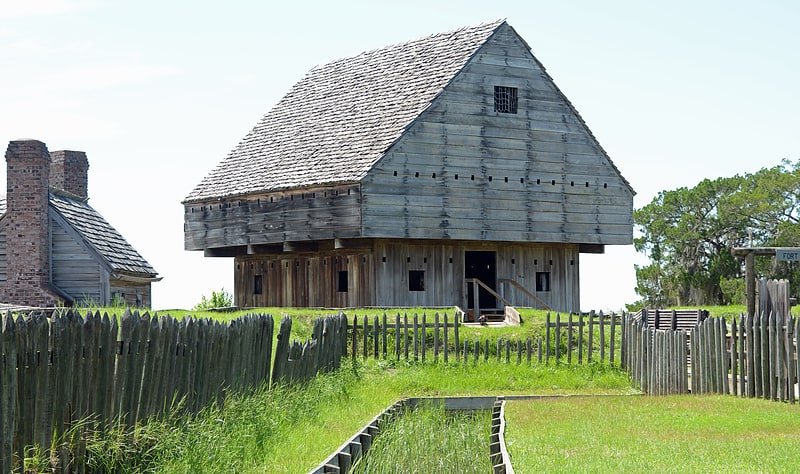
Fort in McIntosh County, Georgia. Fort King George State Historic Site is a fort located in the U.S. state of Georgia in McIntosh County, adjacent to Darien. The fort was built in 1721 along what is now known as the Darien River and served as the southernmost outpost of the British Empire in the Americas until 1727. The fort was constructed in what was then considered part of the colony of South Carolina, but was territory later settled as Georgia. It was part of a defensive line intended to encourage settlement along the colony's southern frontier, from the Savannah River to the Altamaha River. Great Britain, France, and Spain were competing to control the American Southeast, especially the Savannah-Altamaha River region.
Fort King George was a hardship for troops assigned there. A total of 140 officers (including Col. Barnwell) and soldiers died, mostly from camp diseases such as dysentery and malaria, due to poor sanitation (none from battle). The soldiers made up The Independent Company of South Carolina, an "invalid" company of elderly British Regulars, one hundred in all, sent over from Great Britain. Their suffering was largely caused by their own poor health, and inadequate provisions due to poor funding. Problems such as periodic river flooding, indolence, starvation, excessive alcoholism, desertion, enemy threats, and potential mutiny exacerbated hardships at the fort.
The fort was a model for General James Oglethorpe when he set up his southern defense system for Georgia and established a settlement along the Altamaha River. In 1736, Oglethorpe brought Scottish colonists to settle the site of the abandoned Fort King George. They called their village New Inverness, later named Darien. That same year, Oglethorpe built Fort Frederica on Saint Simons Island. Oglethorpe borrowed extensively from ideas laid out earlier when South Carolina imperialists, such as John Barnwell, Joseph Bowdler, and Francis Nicholson, planned Fort King George as part of a defensive system. Oglethorpe decided to dismantle the fort in 1738.
Operated by the state of Georgia, the fort has been reconstructed and is listed on the National Register of Historic Places. It is open to the public for historical tours. Structures include a blockhouse, officers' quarters, barracks, a guardhouse, baking and brewing house, blacksmith shop, moat, and palisades. The park's museum focuses on the 18th-century cultural history of the area, including the Guale, the 17th-century Spanish mission Santo Domingo de Talaje, the fort, and the Scottish colonists. An exhibit explains the 19th-century sawmilling at the site and the remains of two sawmills and ruins. Tabby cement ruins, based on a regional building material, also can be found on the property. Site staff offers living history programs year-round.[1]
Address: 302 McIntosh Rd SE, 31305-4304 Darien
St. Andrew's Episcopal Church
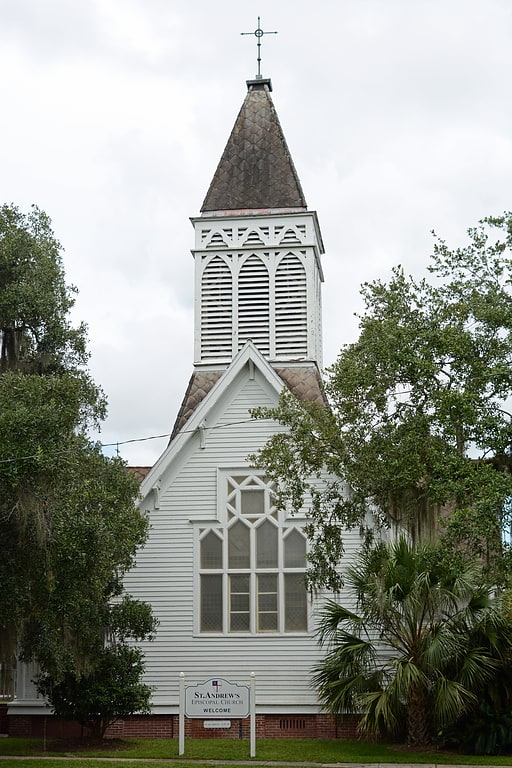
Church in Darien, Georgia. St. Andrew's Episcopal Church in Darien, Georgia is a historic church. It is a contributing building in the Vernon Square–Columbus Square Historic District. The original church was built in 1844 but was burned down during the Civil War. It was rebuilt north of Darien until the present day building was completed on Vernon Square in 1879. It was considered a part of the healing process and reunification between the north and south after the Civil war ended.[2]
Address: Vernon Square, 31305 Darien
St. Cyprian's Episcopal Church
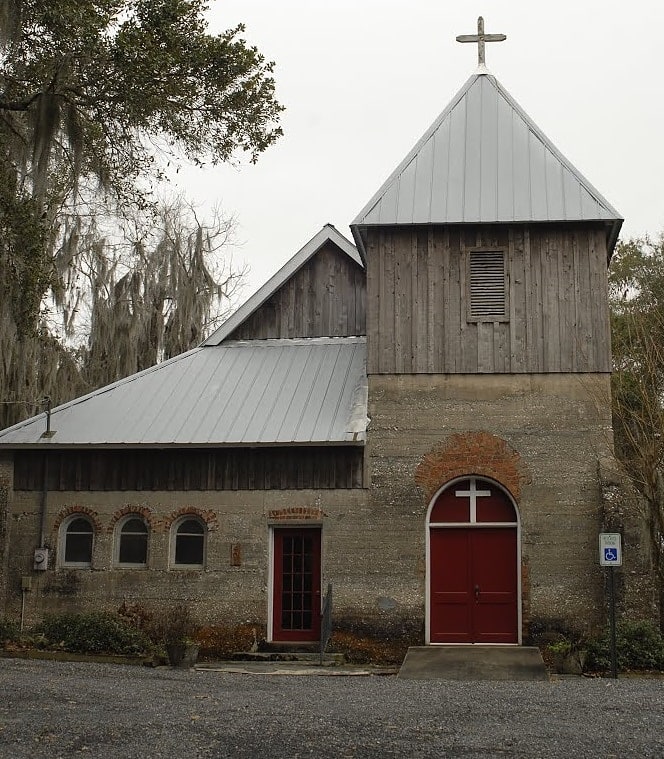
Church in Darien, Georgia. St. Cyprian's Episcopal Church in Darien, Georgia is a historic church. It was built for former slaves of the area. It is one of the few African-American Episcopal in the state of Georgia and is part of the Episcopal community of Mcintosh County.[3]
Address: 401 Fort King George Dr, Darien
McIntosh Art Association

Museum
Address: 404 North Way (PO Box 2103), Darien
Vernon Square–Columbus Square Historic District
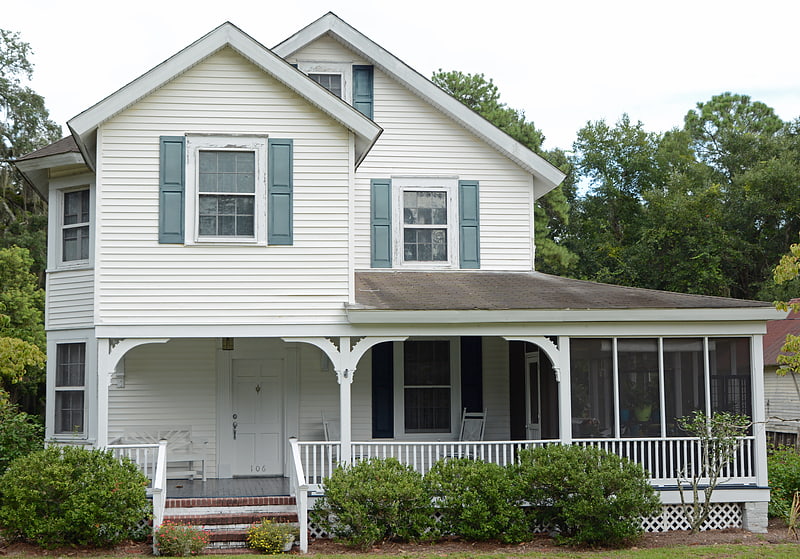
The Vernon Square–Columbus Square Historic District is a historic area on the eastern side of Darien, Georgia. It encompasses two squares of the original 1805 city plan, although Vernon Square now contains a circular street. The plan was derived from James Oglethorpe's plan for Savannah. The area of Vernon and Columbus Wards was platted in 1805. The historic buildings in the area date back to the mid-19th and early 20th centuries. The houses are mostly modest wood-framed structures with weatherboard siding and wood detail.[4]
Ashantilly
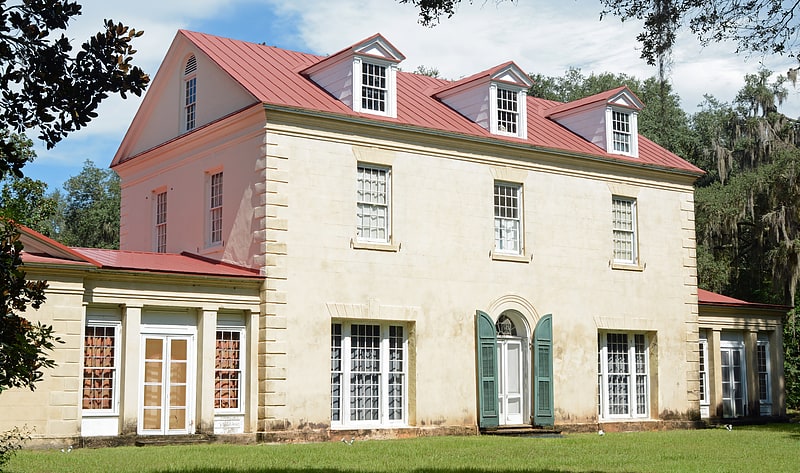
Building. Ashantilly was built by 1820 by Thomas Spalding, north of Darien, Georgia. The construction probably took 2 or 3 years. The house is made out of tabby and is also called Old Tabby. The house was named after Ashintully Castle, an ancestral home in Perthshire, Scotland.
Spalding was a businessman in Darien and inherited property from his mother, Margery McIntosh. He was the owner of the Sapelo Island Plantation.
The Wilcox family bought Ashantilly in 1870 and they made several changes to the house, removing classical columns and marble flagging. The Haynes family moved to the house in 1918. In 1937 the house was gutted by a fire. Restoration of the house started in 1939, using period pieces salvaged in Savannah and Charleston. William Greaner Haynes, Jr. (1908–2001), in 1954, started a private press, the Ashantilly Press, and a building for printing was built on the property. The family donated the property to the Ashantilly Center (a non-profit organization) in 1993.
Ashantilly was added to the National Register of Historic Places on August 25, 2015.[5]
West Darien Historic District
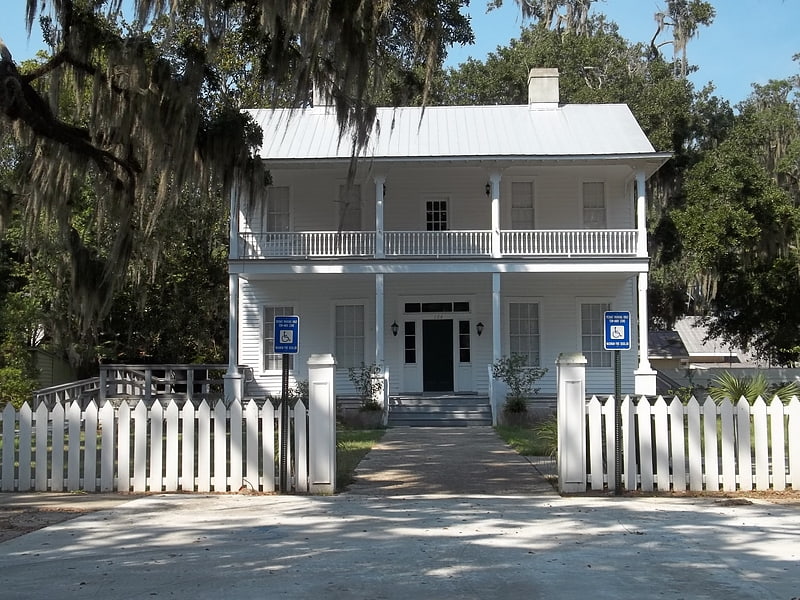
The West Darien Historic District is a historic district in Darien, Georgia. It was added to the National Register of Historic Places on September 17, 2001.[6]